
Do you have a question about the Hitachi CP-AX2503 and is the answer not in the manual?
| Matrix size | 0.63 \ |
|---|---|
| Number of colors | 16.78 million colors |
| Native aspect ratio | 4:3 |
| Projection distance | - m |
| Projection technology | 3LCD |
| Supported aspect ratios | 4:3, 16:9 |
| Contrast ratio (typical) | 5000:1 |
| Screen size compatibility | 60 - 100 \ |
| Projector native resolution | XGA (1024x768) |
| Projector brightness (economic mode) | 1800 ANSI lumens |
| Throw ratio | 0.3:1 |
| Digital zoom | 1.35 x |
| Focal length range | - mm |
| Lamp power | 225 W |
| Light source type | Lamp |
| Lamp power (economic mode) | 5000 W |
| Service life of light source | 3000 h |
| 3D | No |
| Full HD | Yes |
| Supported video modes | 1080i, 1080p, 480i, 480p, 576i, 576p, 720p |
| Analog signal format system | NTSC, NTSC 4.43, PAL, PAL 60, PAL M, PAL N, SECAM |
| Composite video in | 1 |
| Serial interface type | RS-232 |
| USB 2.0 ports quantity | USB 2.0 ports have a data transmission speed of 480 Mbps, and are backwards compatible with USB 1.1 ports. You can connect all kinds of peripheral devices to them. |
| S-Video inputs quantity | 0 |
| VGA (D-Sub) ports quantity | 3 |
| HDCP | - |
| Noise level | 34 dB |
| Certification | UL/C-UL, FCC, AS/NZS CISPR22, CE, GOST-R |
| Noise level (economic mode) | 28 dB |
| RMS rated power | 16 W |
| Placement | Desktop, Ceiling |
| Product type | Standard throw projector |
| Product color | White |
| Power source | AC |
| AC input voltage | 100 - 240 V |
| AC input frequency | 50 - 60 Hz |
| Power consumption (standby) | 0.3 W |
| Power consumption (typical) | 320 W |
| Operating temperature (T-T) | 0 - 40 °C |
| Sustainability certificates | RoHS |
| Depth | 360 mm |
|---|---|
| Width | 377 mm |
| Height | 136 mm |
| Weight | 4300 g |
Provides guidelines for the proper placement and arrangement of the projector.
Instructions for connecting external devices such as computers and media players.
Details on how to safely connect the projector to a power source.
Step-by-step guide for installing batteries into the remote control.
Procedure for powering on the projector and checking indicators.
Procedure for powering off the projector and lamp cooling.
Guide to selecting the appropriate input source for the projector.
How to use the automatic adjustment feature for image optimization.
Guide to navigating and using the projector's on-screen menu system.
How to adjust the aspect ratio of the projected image.
Methods for correcting keystone and other image distortions.
Selects predefined picture modes for optimal viewing.
Adjusts the brightness level of the image.
Sets the aspect ratio for computer or video signals.
Corrects vertical and horizontal keystone distortion.
Adjusts the projected image shape to fit screen corners and sides.
Information on using the projector for PC-less presentations from USB.
Guide to displaying computer content via USB on Windows.
Guide to displaying computer content via USB on Mac.
Procedure for safely replacing the projector lamp.
Instructions for cleaning and replacing the projector's air filter.
Procedure for replacing the internal clock battery.
Lists and explains common error messages displayed by the projector.
Explains the meaning of different indicator lamp states and patterns.
Identifies common issues that might be mistaken for actual machine defects.
Details command formats and response/error codes for network control.
Details communication settings for network bridge functionality.
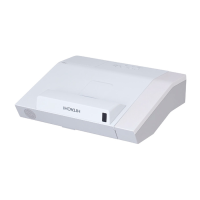

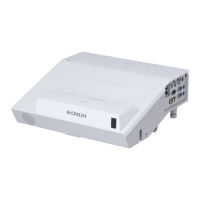



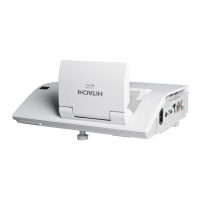


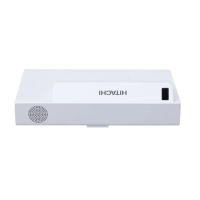
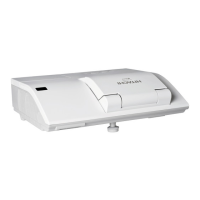

